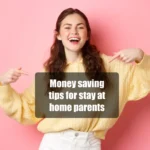The job market is like the heart of the economy—when it skips a beat, we all feel the ripple effects. Recently, U.S. unemployment claims have been making headlines, and if you’re wondering what it means for you, let’s break it down in a way that’s easy to digest.
Unemployment Claims: The Basics
Every week, thousands of Americans file for unemployment benefits, and these numbers act as a pulse check on the economy. Last week, the number of new applications for unemployment benefits dipped slightly to 219,000. That’s fewer than analysts expected, so it’s a good sign, right?
Well, not so fast. While new claims are steady, continuing claims—the number of people still relying on unemployment benefits—rose to a three-year high of 1.91 million.
Think of it this way: fewer people are getting laid off, but those already out of work are finding it harder to get rehired.
A Softer Job Market? Maybe.
The increase in continuing claims could hint at a softening job market. What does that mean for you? It depends on where you are in your career. If you’re job hunting, you might notice fewer opportunities or longer waiting times between interviews.
But here’s the silver lining: the overall labor market is still in decent shape. Unemployment applications remain below historical averages, suggesting layoffs aren’t spiraling out of control.
Also Read: How Holiday Shopping Trends Reveal the Resilient Consumer Spirit
Why It Matters
Unemployment data is more than just numbers—it reflects real-life struggles and successes. When more people can’t find work, it puts pressure on households, spending habits, and even your favorite local businesses.
On the flip side, when jobs are plentiful, consumer spending tends to rise, boosting everything from retail sales to housing markets. It’s a domino effect, and your wallet is right in the middle of it.
The Fed’s Role in the Game
You might wonder, why isn’t the labor market as strong as it could be? Part of the answer lies in the Federal Reserve’s battle with inflation.
To tame inflation, the Fed raised interest rates aggressively over the past two years. Higher rates make borrowing more expensive, which cools spending and hiring. Recently, the Fed has started cutting rates again, but the effects of those hikes are still rippling through the economy.
So, if you’ve noticed that your car loan, mortgage, or credit card feels pricier, that’s the Fed at work.
Bright Spots in the Job Market
Despite some cracks in the labor market, there’s good news too. Job openings rebounded to 7.7 million in October, showing that businesses still need workers.
And in November, employers added a robust 227,000 jobs, shaking off the slow hiring from October. Revised numbers even show that job growth in September and October was better than we initially thought.
This mixed picture means it’s not all doom and gloom. Businesses are still hiring, and opportunities are out there if you know where to look.
What Does This Mean for You?
Whether you’re currently employed, looking for work, or considering a career switch, here’s how to navigate this evolving job market:
- Be Proactive: Update your resume, sharpen your skills, and stay ready to jump on new opportunities.
- Network: Now’s the time to reconnect with old colleagues or attend industry events. Your next job might come from a friend.
- Consider Growth Industries: Sectors like technology, healthcare, and renewable energy continue to show resilience and are worth exploring.
- Manage Your Finances: If you’re worried about job security, start building a safety net by saving more and cutting unnecessary expenses.
What’s Next for the Economy?
The next big marker will be the government’s December jobs report, coming out on Jan. 10. It will provide more clarity on where we stand and what’s ahead.
In the meantime, keep an eye on unemployment trends. They’re not just stats—they tell a story about how businesses are navigating challenges and how secure you might feel in your current role.








